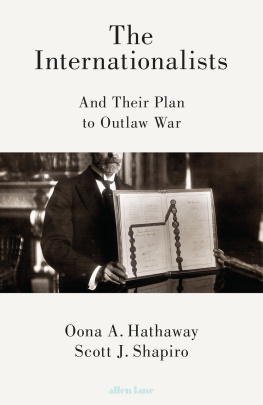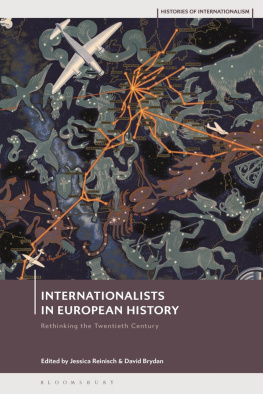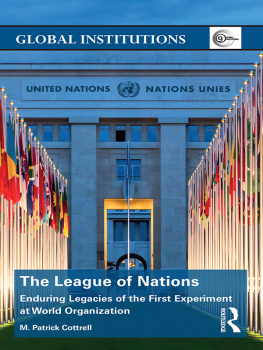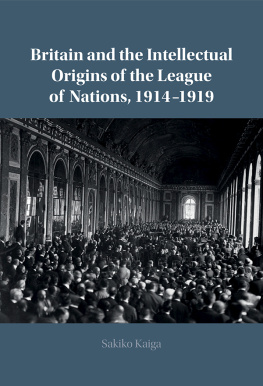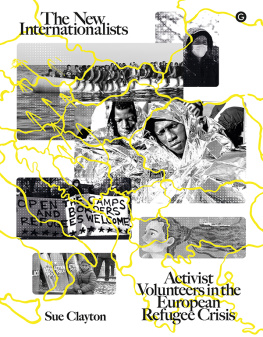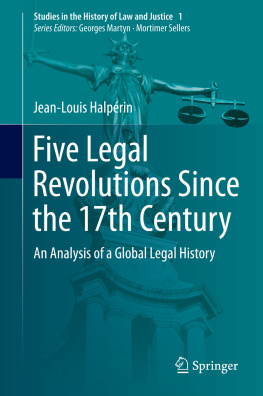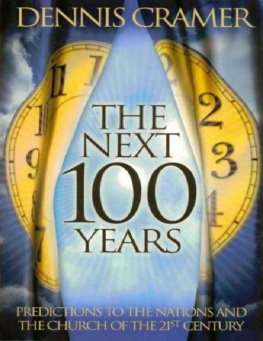Oona A. Hathaway and
Scott J. Shapiro
THE INTERNATIONALISTS
And Their Plan to Outlaw War
ALLEN LANE
UK | USA | Canada | Ireland | Australia
India | New Zealand | South Africa
Allen Lane is part of the Penguin Random House group of companies whose addresses can be found at global.penguinrandomhouse.com.
First published in the United States of America by Simon & Schuster 2017
First published in Great Britain by Allen Lane 2017
Copyright Oona A. Hathaway and Scott J. Shapiro, 2017
The moral rights of the authors have been asserted
Cover Photo: George Rinhart/Getty Images.
ISBN: 978-0-241-23904-9
For Ava and Owen
and
Liza and Drin
Introduction
Crowds gathered outside the Quai dOrsay to watch the world leaders arrive. Onlookers stood wherever they could: on the sidewalk, on taxis, on trucks, on the parapets of the Seine. An extra squad of police mobilized just to remove the people who had climbed streetlamps to get a better view. Dignitaries and journalists pressed through the crowds and handed the ushers their invitations, yellow cards printed for that date, August 27, 1928, with the words: Signature du pacte gnrale renonciation la guerreThe Signing of the General Pact for the Renunciation of War.
The ushers led the guests into the grand Salle de lHorloge, the Clock Room, deep within the immense Foreign Ministry. Enormous chandeliers hung from the halls shining gold ceiling, and blood-red drapes sealed off the outside world. Four colorful cartouches, each depicting one of the Four Continents, were poised on the exquisitely carved moldings. The entire chamber appeared to have been designed to send one message: The Law of the World is made here.
And, indeed, for generations, it had been. In this lavishly appointed hall, the international community established a uniform system of measurements
It was a balmy day outside but hellishly hot inside the Salle de lHorloge. Blazing klieg lights set up to film the ceremony had turned the Clock Room into an oven, roasting the dignitaries in their formal attire. At precisely 3:01, the procession began. Swiss guards carrying medieval halberds led the emissaries into the room. Just as the guests rose, the shouting began. Sit! Sit! the cameramen barked in many different languages. The guests were blocking the shot. Stunned by the incivility of the photographers but obeying orders, they returned to their seats.
Aristide Briand, the French foreign minister, was the master of ceremonies. Briand did not look like a statesman. He was neither tall nor striking. A long drooping mustache obscured a good portion of his grizzled face, and he often seemed bored. Yet Briand was no jaded diplomat. He was an indefatigable defender of France who had spent the decade since Germanys defeat working to spare his country another bloody conflict. Just two years earlier, in 1926, he had won the Nobel Peace Prize for brokering the Locarno Treaties, an interlocking set of agreements designed to prevent the major European powers from waging war with each other. Now Briand, together with his American counterpart, Frank Kellogg, the U.S. secretary of state, aimed to spread the Spirit of Locarno to the entire globe.
As Briand rose to speak, the camera crews switched off the bright klieg lamps and replaced them with a softer spotlight focused on Briand. He began by warmly acknowledging Kellogg on his left, and Gustav Stresemann, the German foreign minister, on his right. This day, he declared, marks a new date in the history of mankind and the end of selfish and willful warfare. From this moment, the nations of the world will no longer treat war as a lawful means to resolve disputes. The treaty will attack the evil at its very root by depriving war of its legitimacy. The room burst into applause. Tears ran down Kelloggs cheeks.
The klieg lights reignited. Blinded, Briand asked that they be switched
Kellogg was next. Unable to get the unwieldy pen to work, he grimaced with irritation and gave it a vigorous shake.
After Kellogg, Paul Hymans, the Belgian minister of foreign affairs, signed the treaty for Belgium and Briand signed for France. The U.K.s acting foreign secretary, Lord Cushendun, then signed for Great Britain and Northern Ireland. The plenipotentiaries of Canada, New Zealand, South Africa, Australia, the Irish Free State, India, Italy, Japan, Poland, and Czechoslovakia followed suit.
The entire ceremony took less than an hour. At 3:57 p.m., a Swiss Guard banged his halberd on the floor, the cameras stopped rolling, and, for the first time in the history of the world, war was declared illegal.
You dont have to be an expert in international relations to know that the agreement signed that daythe Paris Peace Pactfailed to end war. Three years after the grand pronouncement, Japan invaded China. Four years after that, Italy invaded Ethiopia. Four years later, Germany invaded Poland and then most of Europe. With the exception of Ireland, every one of the states that had gathered in Paris to renounce war was at war. And the ensuing catastrophe was far more destructive than the one that preceded it. The death toll of the Second World War was five times that of the First World Waran unimaginable seventy million people. Nor did the Pact stop the Korean War, the Arab-Israeli conflict, the Indo-Pakistani wars, the Vietnam War, the breakup of Yugoslavia, the genocide in Rwanda, the war on terror, or the current conflicts in Ukraine and Syria.
Perhaps the most damning indictment of the Peace Pact was made by the Belgian filmmaker Henri Storck. In 1932, Storck took the footage of the signing of the Peace Pact and spliced it with scenes from newsreels from 1928: snippets of British dreadnoughts firing their enormous guns; German military officers parading in Pickelhauben, their iconic pointed helmets; and Benito Mussolini defiantly shaking his fist. The film had no narration, but its message was clear: the solemn ceremony in the Clock Room was pure political theater. The Great Powers had absolutely no intention of renouncing war; on the contrary, they were busily preparing for it. The French government was so stung by the satire that it censored the
The Peace Pact is not reviled like the Treaty of Versailles of 1919 or the Munich Agreement of 1938, both of which are often blamed for contributing to the Second World War. No one actually cares enough to blame or revile it. When we wrote an op-ed in The New York Times praising the Pact,
The argument of this book is that it should be. The Peace Pact quite plainly did not create world peace. Yet it was among the most transformative events of human history, one that has, ultimately, made our world far more peaceful. It did not end war between states, but it marked the beginning of the endand, with it, the replacement of one international order with another.
The beginning of the end of war between states? The creation of a new international order? These are strong claims, and they understandably provoke skepticism. After all, even as we write these words, many parts of the world are embroiled in brutal, devastating conflicts. Syria is in the midst of the bloody civil war that has already claimed half a million lives. The Kurds are fighting Turkey for independence. Russia has seized Crimea and is currently supporting armed separatists in Eastern Ukraine. The Islamic State has spread from Iraq to Syria and now has control of significant territory in Libya as well. Nigeria is battling the terrorist group Boko Haram. The number of casualties from these conflicts is horrifying. In 2015, there were three armed conflictsSyria, Iraq, Afghanistanthat had battle-related deaths greater than ten thousand. In Syria alone, the annual toll exceeded thirty thousand. An additional six conflicts, raging on three different continents, had at least one thousand fatalities: Nigeria, South Sudan, and Somalia (Africa); Pakistan and Yemen (Asia); and Ukraine (Europe).

